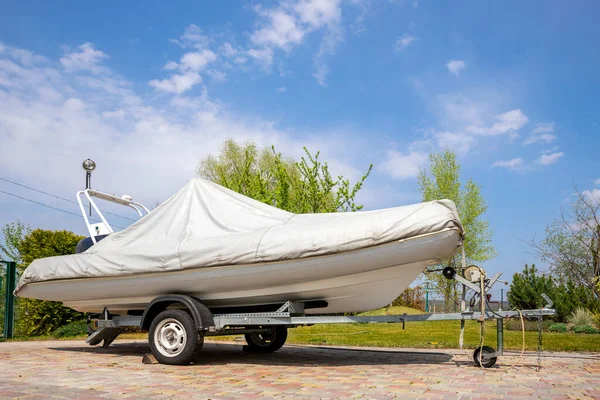Winterizing your boat: A complete guide to protecting your boat in winter

Winterizing your boat: A complete guide to protecting your boat in winter
Winter is approaching, and with it the need to prepare your boat for the cold weather. L'wintering is a crucial step in protecting your boat and ensuring its longevity. Whether you're sailing on the Lake Genevathe Lake Neuchâtel or the Lake ZurichHere's a complete guide to winterising your boat like a pro.
Why winterise your boat?
Wintering is essential for :
- Protecting the engine Avoid corrosion and frost damage.
- Preserving the hull Limiting the risk of cracks and damage.
- Saving money : Prevent costly repairs in the spring.
- Guaranteeing safety Ensuring your boat is ready to sail as soon as the warm weather returns.
The key stages of winter storage
1. Complete cleaning of the boat
Before storing your boat for the winter, a thorough cleaning is essential.
- Hull Wash it to remove salt, algae and dirt.
- Interior Drain the water tanks and clean the carpets and seats.
- Engine Rinse with fresh water to remove any salt or lake water residue.
2. Draining and protecting the engine
The engine is the most sensitive to cold.
- Drain Drain the oil and coolant.
- Antifreeze Add a suitable antifreeze to protect the cooling circuit.
- Fuel Stabilise the fuel or drain the tank to avoid condensation.
3. Hull protection
- Antifouling Apply a coat of antifouling to protect the hull from aquatic organisms.
- Tarpaulin Cover the boat with a breathable tarpaulin to prevent moisture build-up.
4. Equipment storage
- Electronics Remove electronic devices (GPS, depth sounder) and store them in a dry place.
- Sails and Ropes Clean and store sails, ropes and fabric equipment.
- Batteries Disconnect the batteries and store them in a cool, dry place.
Where to winter your boat?
1. À Quai
If you choose to leave your boat alongside the quay, make sure that the port offers winter storage services (electricity, surveillance).
- Benefits Easy access to the boat for checks.
- Disadvantages : Increased risk of damage due to frost or bad weather.
2. In Hangar
Storage in a hangar is the safest way to protect your boat.
- Benefits Protection against frost, snow and wind.
- Disadvantages : Higher cost and limited access.
3. At home
If you have the space, you can winter your boat at home.
- Benefits Economical and practical for small boats.
- Disadvantages : Requires a suitable, secure area.
Mistakes to avoid during wintering
- Neglecting Cleaning Salt and seaweed residues can damage the hull and engine.
- Forget the Antifreeze Without antifreeze, the cooling circuit can freeze and crack.
- Poorly covering the boat A loose cover can let in moisture and damage the interior.
- Ignore Batteries : Batteries that are not disconnected may discharge completely and become unusable.
Practical advice for successful winter storage
- Plan ahead Don't delay winterising your boat as soon as the sailing season comes to an end.
- Use suitable products Choose specific products for wintering (antifreeze, antifouling).
- Call in a Professional If you're not sure, leave the wintering to an expert.
Winterising your boat is an essential step in preserving it and avoiding unpleasant surprises in the spring. By following this guide, you can protect your boat effectively and make the most of the next boating season. Ready to face winter with peace of mind? 🚤❄️
